BaBak BaBaie guitars Vincenzo giura


BaBak BaBaie guitars Vincenzo giura

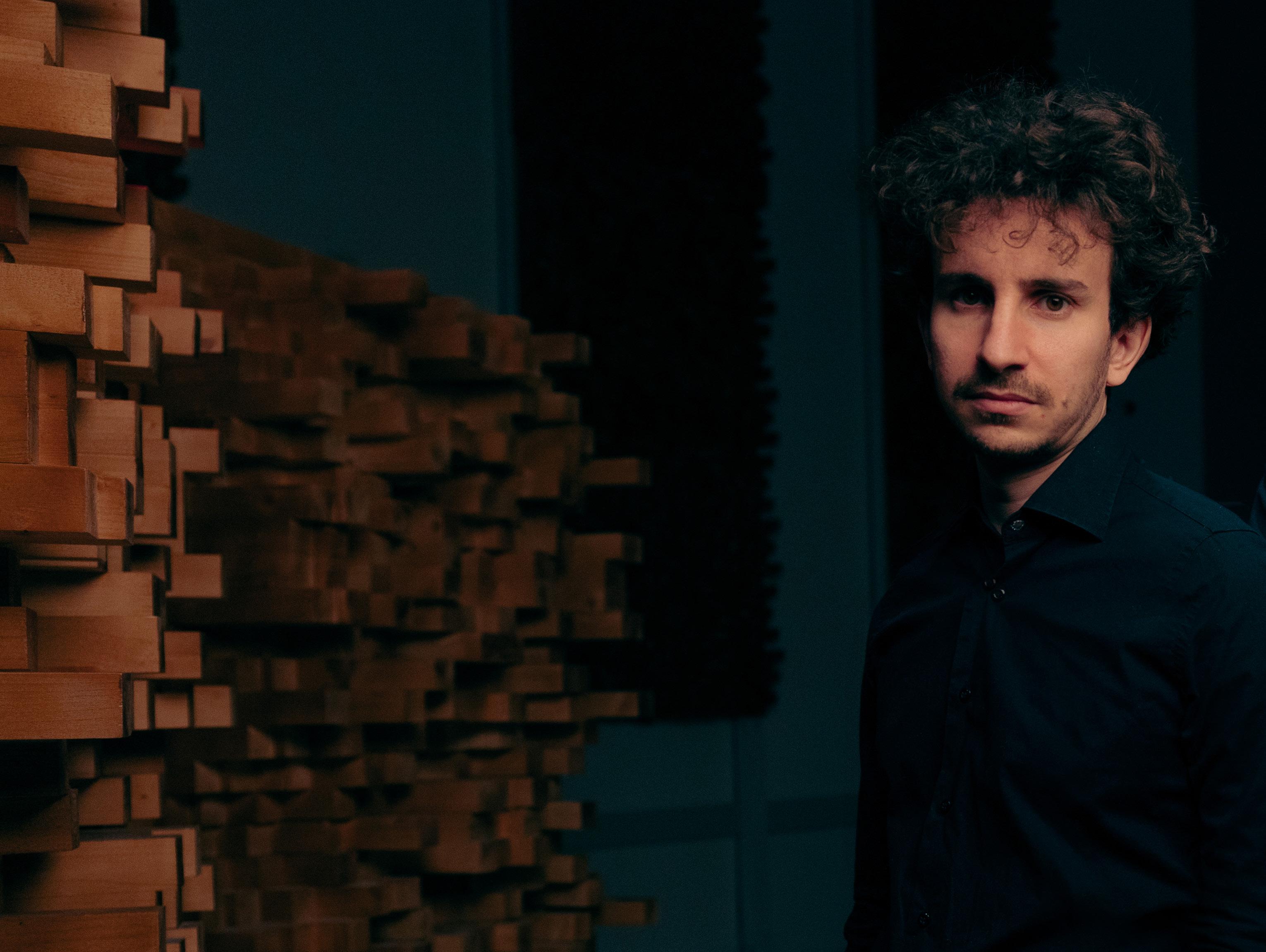
WOLFGANG AMADEUS MOZART (1756-91)
Piano Sonata No. 15, KV 533/494 (1788)
Guitar duo arrangement from the original in F major
01. I. Allegro 06'27
02. II. Andante 06'39
03. III. Rondo: Allegretto 07'08
FRANZ SCHUBERT (1797-1828)
Klavierstück No. 2, from Drei Klavierstücke, D. 946 (1828)
Guitar duo arrangement from the original in E-flat major
04. Allegretto 12'23
FRANZ JOSEPH HAYDN (1732-1809)
05. Andante and Variations in F, Hob. XVII:6 (1793) 15'43
Guitar duo arrangement from the original in F major Total Play Time: 48'23
Guitar duo arrangements by Vincenzo Giura
Mozart • Schubert • Haydn

Babak Babaie guitar
Vincenzo Giura guitar



We met in 2010 at the University of Music and Performing Arts in Graz, Austria. Our collaboration arose from our mutual fascination with the performance of Classical repertoire on historical instruments. Following the historical sources and original transcriptions by guitarists Giuliani, Carulli and De Fossa, we try to evoke, rather than reproduce, the sound of other instruments on guitar. Ultimately, this is for us the main purpose of historical performance: trying to go back to the musical idea of the composer, rather than focussing on the instrumental clichés of their time, to make the style alive and, therefore, original.
We both play heptachord Romantic guitars; Babak plays a Grobert copy made in 2004 by Denis Fuchs. Vincenzo plays an original French guitar made in Mirecourt around 1830.




The latin word Altus means high and deep at the same time, one word for both.
According to Hans Keller, “the great composer does not only compose in certain forms and styles, but equally, against them. Style is background, ideas are foreground. The background is what the composer leads you to expect; the foreground is what he does instead”. The greater the tension between background and foreground, combined in both maximal contrast and maximal unity, the more the composition becomes a masterwork. This fully applies to this programme. Somehow, our expectation is at the same time met and disregarded: the innovative double variation form in Haydn is written within and against march rhythms. Schubert’s extreme thematic contrasts are developed in a continuous flow. Finally, Mozart’s Sonata is at the same time contrapuntal and in the ‘galant’ style. Extreme latent unity against extreme manifest variety is the mark of genius. This is true of all good music.


The idea of dividing the score of solo piano pieces into two parts stems from the conviction that it is also possible to play the solo repertoire from a chamber perspective, in which the pianist’s two hands, or more generally all the individual components of the musical discourse, confront each other, converse in dialogue, and interact continuously. Playing these arrangements in concert, we discovered that we were not so much interested in facing the audience and projecting, as synchronously as possible, each one’s own half of a single voice, however fascinating that might seem. It seemed more interesting to us to address each other, letting the listener enter into the dynamics of this continuous interchange. The pieces proposed here support this perspective more than ever. This is one of the reasons why they were chosen, not only because they are genuine masterpieces of their time. This is why we have spent years breaking them down and putting them back together again and again in our arrangements, and why they continue to offer us new ideas every time we work on them.
Babak Babaie and Vincenzo Giura


In a world of Instagram filters, we’re used to experiencing different interpretations of the same material, playing with colour and proportion until a new guise is settled upon. Yet whereas this process is immediate, limited to a few stock alternatives, the reworking of music into different guises is a subtler process that has developed over centuries. Arrangements and transcriptions, often created with painstaking care based on skilful craftsmanship, offer refreshing new ways to interpret an original work. In the case of this album, these guitarists have made their own historically-informed transcriptions of well-established piano repertoire by Mozart, Schubert and Haydn, shedding new light on the familiar.
W.A. Mozart completed his Piano Sonata in F, No. 15, K. 533, on 3 January 1788; it was published later that year by Hoffmeister. The final-movement Rondo had been written separately as a stand-alone piece in 1786, later catalogued as the Rondo in F, K. 494. Mozart added the first two movements in 1788, extending the Rondo for balance and in the process creating the impression that he had conceived the three movements as a complete work.


Yet between the composition of the Rondo and the Sonata’s first two movements came a cataclysmic event in Mozart’s life: the death, on 28 May 1787, of his father, Leopold – in many ways the Platonic ideal of the ‘tiger parent’ – with whom Mozart corresponded frequently throughout his life. Mozart wrote to Baron Gottfried von Jacquin: “I inform you that on returning home today I received the sad news of my most beloved father’s death. You can imagine the state I am in.” This loss led to a relatively fallow period in Mozart’s output, which may in part explain his decision to recycle the earlier Rondo in this Sonata.
Mozart had returned to Vienna in November 1783, supplementing his income by taking pupils, including Hummel, who lodged with him at the time this music was composed, between 1786 and 1788, and who would become an accomplished composer of keyboard works in his own right. Mozart relied on students for money, but found that they could be unreliable, as he wrote in 1782: “I no longer charge for 12 lessons, but monthly. I learnt to my cost that my pupils often dropped out for weeks at a time; so now, whether they learn or not, each of them must pay me 6 ducats”. Even so, Mozart’s income was scant, and by the summer of 1788 he started to write letters to his friends requesting loans, or asking for patience if he had not yet paid them back.



The style of the Sonata in F epitomises Mozart’s characteristic combination of levity and profundity. Leopold had written to Wolfgang a decade earlier, on 13 August 1778:
“If you have not got any pupils, well then compose something more … But let it be something short, easy and popular … Do you imagine that you would be doing work unworthy of you? If so, you are very much mistaken. Did [J.C.] Bach, when he was in London, ever publish anything but similar trifles? What is slight can still be great, if it is written in a natural, flowing and easy style – and at the same time bears the marks of sound composition.”
Yet Mozart – and Haydn – distinguished themselves from the lightweight galant style of J.C. Bach (“the London Bach”) by absorbing the techniques of his father, J.S. Bach, and incorporating contrapuntal elements into a spacious, balanced framework. The Sonata in F is a fine demonstration of this combination of influences, opening with a motif worthy of J.S. Bach but unfolding in a spirit of good humour. This arrangement is not the only two-instrument version of the original Sonata; Grieg made a two-piano arrangement of the work, adding new layers of harmony to an accompanimental second part.
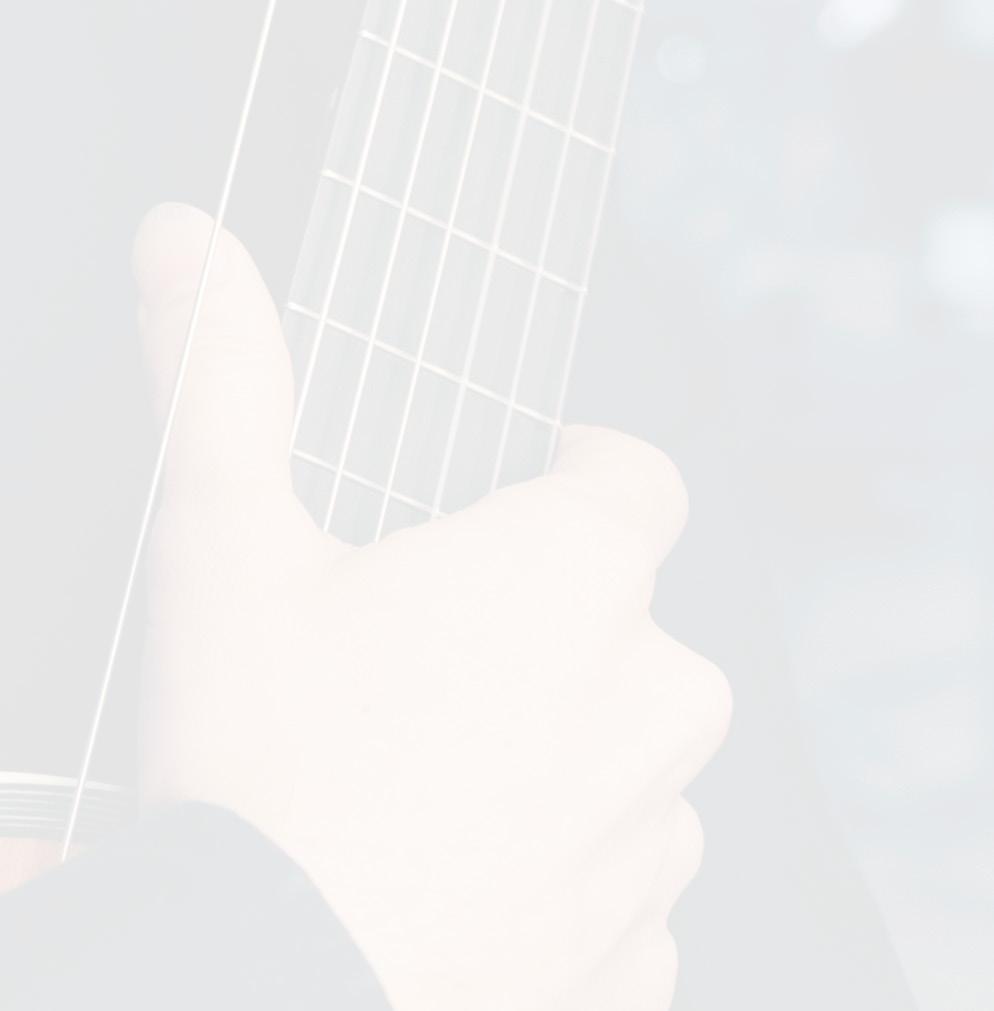


The central Andante in B flat is remarkable for its tenderness but also for a rawness and spacious use of the piano that are at times Beethovenian. Accustomed as our ears are to the overt emotion unleashed in the 19th century, it is always worth listening closely to Mozart’s slow movements, especially those written in the aftermath of his father’s death; a delicate, childlike simplicity and apparent innocence often provide the serene surface beneath which there are real depths of feeling, including grief, to be plumbed. In the case of this Andante, that fragility is offset by moments of more exposed emotion, anticipating the Romantic style during knotty and impassioned minor-key passages. One wonders, again, what Mozart might have gone on to achieve had he lived longer. The final Rondo is based on a charming, delicate theme which is alternated, in varied guises, with episodes that are by turns declamatory and introspective, eventually running out of steam and fading away into an ending of remarkable subtlety.

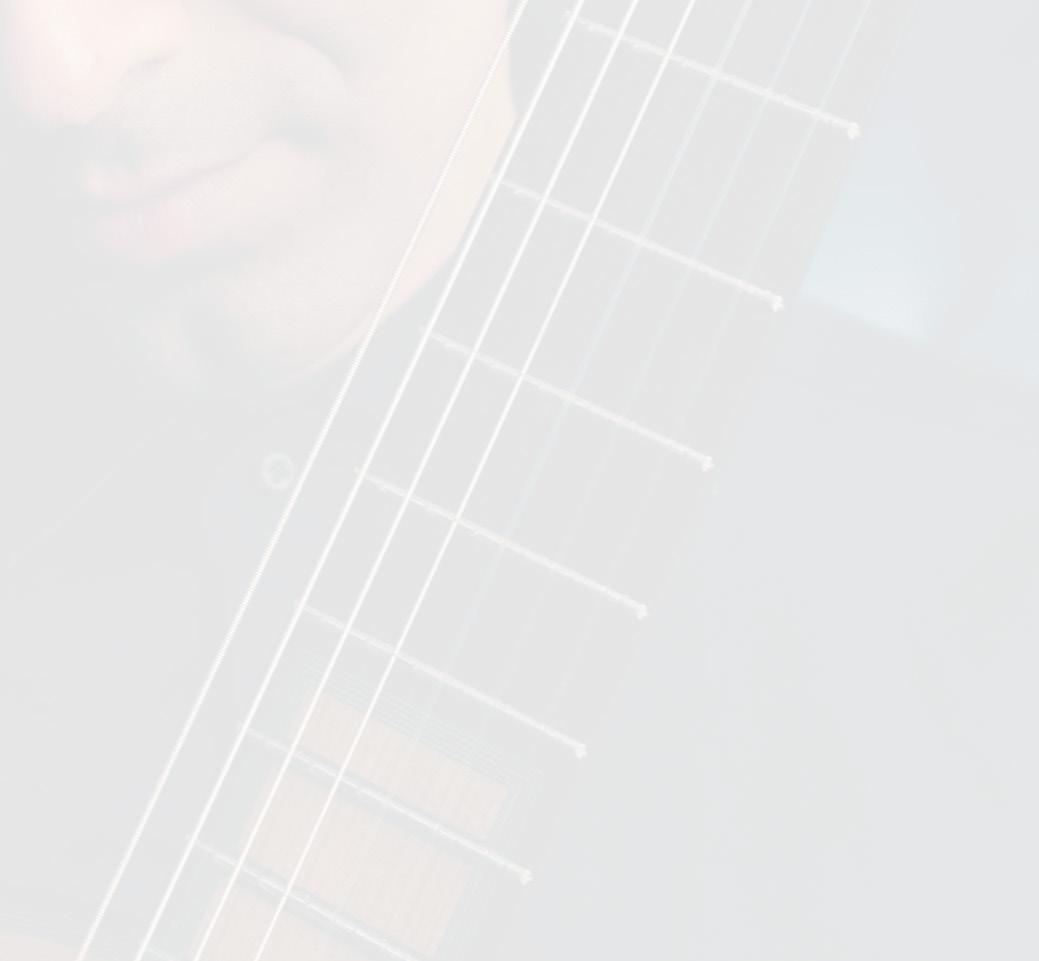
Franz Schubert’s first two piano sonatas were published in Vienna in the spring of 1826. Following this achievement the composer approached two Leipzig publishers, Heinrich Albert Probst and Breitkopf & Härtel, offering them a selection of his chamber works. Their response was unenthusiastic, and both suggested he send them some lighter, shorter numbers. It seems probable that this request prompted Schubert to write a series of shorter piano pieces in the following couple of years, including several Moments musicaux and, in 1828, the Drei Klavierstücke, D. 946.
The autograph score of D. 946 is scruffier than many of Schubert’s final manuscripts, lacking the polish often seen in other works he had prepared for publication. Indeed, it is not entirely certain that these pieces were intended to be grouped together as a set. It was Brahms who edited the works before their first, posthumous, publication in 1868, assigning to them the simple title, Drei Klavierstücke. Brahms might equally have designated the pieces ‘impromptus’ given their spontaneous nature. The lilting second piece, in E flat, has the rocking character of a barcarolle, contrasted with two dramatic minor-key episodes, the second of which is marked by a change in meter. What is particularly striking about the Drei Klavierstücke is the manner in which Schubert forms a bridge between the gravitas and balance of Classicism on the one hand, and the tempestuous experiments of Romanticism on the other. It is difficult to understand how little acclaim these pieces received when they were composed.


Joseph Haydn spent much of his career away from the cultural centre of Vienna in the Hungarian marshes of Esterházy, overseeing the palace’s musical life in a stable but remote post lasting from 1761 until 1790, after which he travelled to England. From 1795 Haydn was able to continue his courtly duties on a part-time basis, enabling him to spend more time in Vienna. Haydn’s two sojourns in England took place in 1791-2 and 1794-5.


Composed in Vienna, the Andante and variations in F, Hob. XVII/6, also known as the Sonata ‘Un piccolo divertimento’, dates from 1793, between those trips to England. The innocuous title might lead one to believe that this is a relatively lightweight work, but it is virtuosic and deeply felt, written partly as a response to the sudden death, on 23 January, of his friend, the Viennese amateur musician Maria Anna (or Marianne) von Genzinger. She was only 42. Haydn had written his Piano Sonata in E flat (Hob. XVI/49) for Marianne in 1789-90, a piece the dedicatee had declared she liked “very much indeed”. The Andante and variations were also inspired by a gifted living pianist, Barbara (“Babette”) von Ployer, for whom Mozart had composed his Piano Concertos K. 449 and K. 453.
Haydn’s ingenuity with form is something for which he is justly celebrated; he pioneered ‘monothematic sonata form’, using one rather than two main themes, and in this case unfolds another of his characteristically impressive structural techniques: a set of double variations. Haydn used the device to similarly mesmerising effect in the slow movement of his ‘Drumroll’ Symphony, No. 103 (1795). In the chamber work the two themes are in F minor and F major: each is articulated and then varied twice before the coda. There is a noble, dotted-rhythm F-minor theme and an elegant, more animated F-major melody. Haydn originally ended the work with the second variation in F major and a brief coda, but then revised it to include an extended coda of mournful chromaticism, transforming the dotted motif into a haunting, funereal tolling, fading without solace to a desolate close: almost certainly a tribute to his departed friend.







Babak Babaie was born in 1987 in Tehran, Iran. He started his formation with Alireza Tafaghodi and later on with Mehrdad Pakbaz. His professional career in classical guitar started after he won First Prize at the first Soloist Competition of Tehran in 2008. He graduated in Guitar Performance with Paolo Pegoraro at Kunstuniversität Graz and continued his studies in Switzerland under the supervision of Paul Galbraith at Musikakademie Basel and, later on, he graduated in Music Pedagogy with Andreas von Wangenheim at the Musikhochschule in Lucerne. He has participated in several masterclasses, such as Accademia Musicale Chigiana in Siena in the class of Oscar Ghiglia. He has given concerts regularly in Iran, Europe and Canada, as a soloist and in chamber music ensembles, not only with this duo project, but also with ‘A musical theatre for children’ and ‘Lachrimae: Songs and Fantasies by John Dowland’ with soprano Lena Tschinderle. Since 2016 Babak has lived in Basel and works as a freelance guitarist and guitar teacher at the Freie Musikschule in Basel and Musikschule Lucerne.
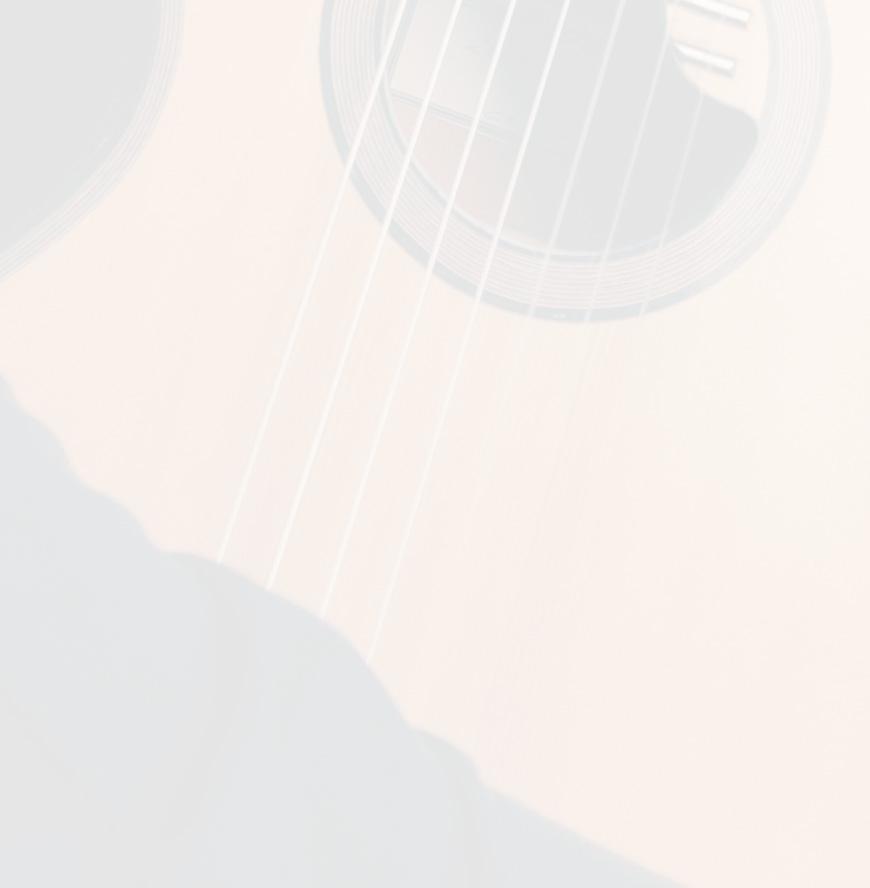

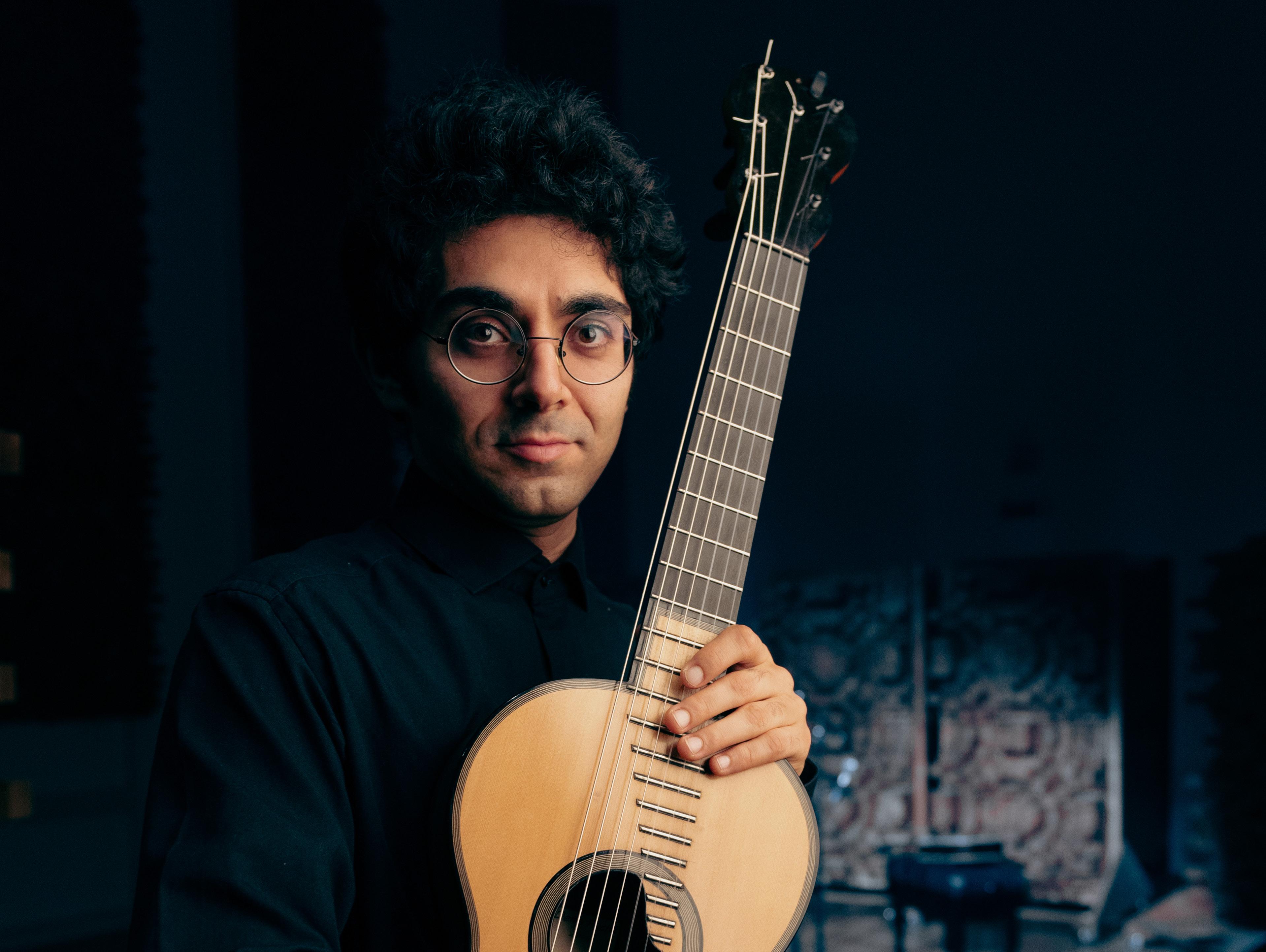 Babak Babaie
Babak Babaie

Vincenzo Giura was born in 1984 in Italy. He owes his musical formation to Fernando Di Modugno and to Stefano Grondona, graduating in Bari and Vicenza. He later studied with Paolo Pegoraro in Graz and Paul Galbraith in Basel. Of particular significance to him was the experience, for about a decade, of the summer courses held by Oscar Ghiglia at the Accademia Musicale Chigiana of Siena, at first as a listener and later as a scholarship student. He has given concerts as a soloist and in chamber music ensembles, frequently taking part in different guitar duo formations. Among others, he wishes to mention Cristina Lyssimachou, Vahur Kubja, Petra Polackova and Babak Babaie. His own transcriptions have always formed a big part of his repertoire. From 2011 to 2016 Vincenzo was teaching Guitar at the Conservatorio Santa Cecilia in Rome. He is currently Guitar Professor at the Conservatorio Nino Rota of Monopoli.



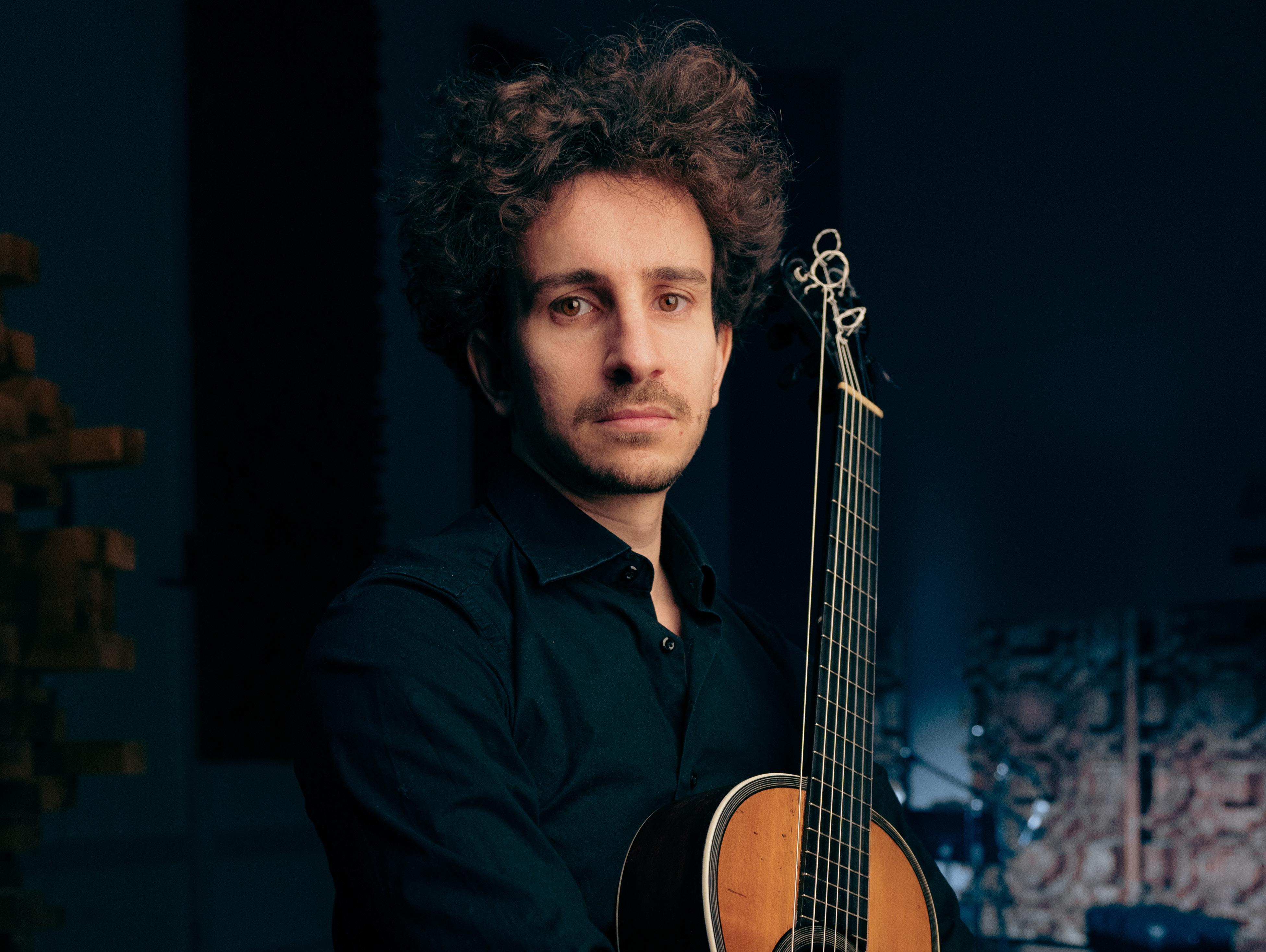 Vincenzo Giura
Vincenzo Giura

Ci siamo conosciuti nel 2010 all’Università di Musica e Spettacolo di Graz, in Austria. La nostra collaborazione è nata da un comune interesse verso l’esecuzione del repertorio classico su strumenti storici.
Seguendo le fonti storiche - e come accade nelle trascrizioni originali dei chitarristi Giuliani, Carulli e De Fossa-, cerchiamo di evocare, piuttosto che riprodurre, il suono di altri strumenti con la chitarra. Si tratta, per noi, del vero obiettivo di una performance storicamente informata: cercare di risalire all’idea musicale del compositore, piuttosto che concentrarsi sui cliché strumentali del suo tempo, per rendere lo stile vivo
Suoniamo entrambi chitarre romantiche a sette corde; Babak suona una copia Grobert realizzata nel 2004 da Denis Fuchs. Vincenzo suona una chitarra francese originale prodotta a Mirecourt intorno al 1830. e, in questo senso, originale.




Il termine latino Altus significa alto e profondo allo stesso tempo. Un’unica parola per entrambi.
Hans Keller ha scritto: “Lo stile è sfondo, le idee sono in primo piano, così come la forma è sfondo e la struttura è in primo piano. Lo sfondo è quello che il compositore induce ad aspettarsi; il primo piano è quello che egli, invece, fa. Ciò che rende chiaramente significative le tensioni tra primo piano e sfondo è la combinazione di massimo contrasto e massima unità che avviene tra di esse: maggiore è la tensione, maggiore è il significato. Un grande compositore non solo compone in certe forme e stili, ma ugualmente, contro di essi”.
In questi pezzi, la nostra aspettativa viene, in qualche modo, costantemente assecondata e disattesa: l’innovativa tecnica della doppia variazione di Haydn viene realizzata in passi di marcia o in loro contrapposizione; gli estremi contrasti tematici di Schubert sono sviluppati in un unico flusso; la Sonata di Mozart è allo stesso tempo contrappuntistica e in stile galante.
Tutto ciò è sempre vero per la musica di alto livello: estrema unità latente contro estrema varietà manifesta, questo è il segno del genio.
L’idea di dividere in due la partitura di pezzi per pianoforte-solo parte dalla convinzione di poter suonare anche il repertorio solistico secondo una prospettiva cameristica, in cui le due mani del pianista, o più in generale tutte le singole componenti del discorso musicale, si confrontano, dialogano, interagiscono continuamente. Suonando questi arrangiamenti in concerto, abbiamo scoperto che non ci interessava tanto essere rivolti al pubblico e proiettare, quanto più possibile in sincrono, ciascuno la propria metà di un’unica voce, per quanto affascinante potesse sembrare. Più interessante ci è sembrato invece rivolgerci l’uno all’altro, lasciando che fosse l’ascoltatore ad entrare nella dinamica di questo continuo interscambio. I brani qui proposti assecondano questa prospettiva più che mai. Anche per questo sono stati scelti, non solo per il fatto che si tratti di autentici capolavori del loro tempo. Per questo abbiamo passato anni a scomporli e ricomporli continuamente nei nostri arrangiamenti, e per questo non smettono di offrirci nuovi spunti ogni volta che ci lavoriamo.


Babak Babaie e Vincenzo Giura


In un mondo di filtri Instagram, siamo abituati a sperimentare interpretazioni diverse dello stesso materiale, giocando con il colore e le proporzioni fino a quando non si sceglie una nuova forma. Tuttavia, mentre questo processo è immediato, limitato a poche alternative standard, la rielaborazione della musica in forme diverse è un processo più sottile, che si è sviluppato nel corso dei secoli. Arrangiamenti e trascrizioni, spesso creati con cura minuziosa e sapiente maestria, offrono modi nuovi e freschi di interpretare un’opera originale. Nel caso di quest’album, i chitarristi hanno realizzato le proprie trascrizioni storicamente informate del repertorio pianistico ben consolidato di Mozart, Schubert e Haydn, dando nuova luce a ciò
Sonata per pianoforte in Fa, n. 15, K. 533
completò la il 3 gennaio 1788. Essa fu pubblicata
nello stesso anno da Hoffmeister. Il movimento finale Rondo era stato scritto separatamente come pezzo a sé stante nel 1786 e fu successivamente catalogato come Rondo in Fa, K. 494. Mozart aggiunse i primi due movimenti nel 1788 e prolungò il Rondo per ottenere un maggiore equilibrio, dando così l’impressione

Eppure, tra la composizione del Rondo e i primi due movimenti della Sonata, si verificò un evento catastrofico per la vita di Mozart: la morte, il 28 maggio 1787, di suo padre Leopold – per molti versi l’ideale platonico del ‘genitore tigre’ – con il quale Mozart mantenne un assiduo contatto per tutta la vita. Mozart scrisse al barone Gottfried von Jacquin: “Vi informo che tornando a casa oggi ho ricevuto la triste notizia della morte del mio amatissimo padre. Potete immaginare lo stato in cui mi trovo.” Questa perdita fu all’origine di un periodo di relativa inattività nella produzione di Mozart, cosa che può in parte spiegare la decisione di riciclare il precedente Rondo in questa Sonata.

Mozart era tornato a Vienna nel novembre 1783, integrando le sue entrate grazie ad alcuni allievi, tra cui Hummel, che alloggiava con lui al momento in cui quest’opera fu composta, tra il 1786 e il 1788, e che sarebbe diventato a pieno titolo un abile compositore di opere per pianoforte. Mozart faceva affi damento sugli studenti per il denaro, ma scoprì che essi potevano rivelarsi inaffi dabili, come scrisse nel 1782: “Non faccio più pagare 12 lezioni, ma mensilmente. Ho imparato a mie spese che i che è familiare.


miei alunni spesso abbandonavano gli studi per settimane consecutive; quindi ora, che imparino o no, ciascuno di loro deve pagarmi 6 ducati ”. Anche così, le entrate di Mozart erano scarse e nell’estate del 1788 iniziò a scrivere lettere ai suoi amici chiedendo prestiti o invocando la loro pazienza qualora non avesse ancora restituito il denaro.
Lo stile della Sonata in Fa incarna la combinazione, tipica di Mozart, di leggerezza e profondità. Dieci anni prima, il 13 agosto 1778, Leopold aveva scritto a Wolfgang:
“Se non hai allievi, allora componi di più… Ma che sia qualcosa di breve, facile e popolare… Pensi che sarebbe un lavoro indegno di te? Se è così, sei in errore. [J.C.] Bach, quando era a Londra, pubblicò mai qualcosa di diverso da simili inezie? Ciò che è leggero può ancora essere grande, se è scritto in uno stile naturale, fluido e facile – e allo stesso tempo porta in sé i segni della composizione”.
Tuttavia Mozart – e Haydn – si distinsero dallo stile leggero e galante di J.C. Bach (“il Bach di Londra”) per aver assimilato le tecniche di suo padre, J.S. Bach, e incorporato elementi contrappuntistici in una struttura ariosa ed equilibrata. La Sonata in Fa è una bella dimostrazione di una simile combinazione di influenze, poiché inizia con un motivo degno di J.S. Bach ma prosegue in uno spirito allegro. L’arrangiamento qui proposto non costituisce l’unica versione per due strumenti della Sonata originale; Grieg eseguì un arrangiamento per due pianoforti di quest’opera, aggiungendo nuovi livelli di armonia a una seconda parte di accompagnamento.


L’Andante centrale in Si bemolle è degno di nota per la sua tenerezza ma anche per una crudezza e un ampio uso del pianoforte a volte di impronta beethoveniana. Per le nostre orecchie, avvezze alle emozioni sfrenate del XIX secolo, vale sempre la pena di ascoltare attentamente i movimenti lenti di Mozart, specialmente quelli scritti all’indomani della morte del padre; una delicata semplicità infantile e un’apparente innocenza spesso creano la superficie serena sotto la quale si trovano i sentimenti più


profondi, come il dolore, che vanno scandagliati. Nel caso di questo Andante, quella fragilità è compensata da momenti di emozione più manifesta, che anticipano lo stile romantico nei passaggi nodosi e appassionati in tonalità minori. Ci si chiede, ancora una volta, dove sarebbe potuto arrivare Mozart se fosse vissuto più a lungo. Il Rondo finale si basa su un tema accattivante e soave, alternato, in varie forme, ad episodi a turno declamatori e introspettivi, che finiscono per esaurirsi e sfumare in un finale di grande delicatezza.
Le prime due sonate per pianoforte di Franz Schubert furono pubblicate a Vienna nella primavera del 1826. Successivamente, il compositore contattò due editori di Lipsia, Heinrich Albert Probst e Breitkopf & Härtel, offrendo loro una selezione di opere da camera. La loro risposta fu poco entusiastica: entrambi gli suggerirono di inviare loro brani più leggeri e più brevi. È probabile che sia stata questa richiesta a indurlo a scrivere, nei due anni successivi, una serie di brani per pianoforte più brevi, tra cui diversi Moments musicaux e, nel 1828, Drei Klavierstücke, D. 946.
La partitura autografa di D. 946 è meno curata di molti degli ultimi manoscritti di Schubert: manca il lavoro di rifinitura che aveva caratterizzato altre opere destinate alla pubblicazione. In effetti, non è del tutto certo che questi pezzi fossero stati pensati come un’unico lavoro. Fu Brahms a curare le opere in vista della prima pubblicazione postuma nel 1868, assegnando loro il semplice titolo Drei Klavierstücke. Brahms potrebbe anche aver definito i pezzi “improvvisi”, data la loro natura spontanea. Il secondo pezzo cadenzato, in Mi bemolle, ha il carattere cullante di una barcarolle, in contrasto con due drammatici episodi in tonalità minore, il secondo dei quali è contrassegnato da una variazione metrica. Ciò che colpisce particolarmente dei Drei Klavierstücke è il modo in cui Schubert crei un collegamento tra la solennità e l’equilibrio del Classicismo da un lato e gli esperimenti tempestosi del Romanticismo dall’altro. È difficile comprendere la debole accoglienza riservata a questi brani quando furono composti. Joseph Haydn trascorse gran parte della sua carriera lontano dal centro culturale di Vienna, nelle paludi ungheresi di Esterházy, supervisionando la vita musicale del palazzo in un impiego stabile, seppur remoto, dal 1761 al 1790, in seguito al quale si recò in Inghilterra. A partire dal 1795, Haydn poté occuparsi dei propri doveri più saltuariamente, così da poter trascorrere più tempo a Vienna. I due soggiorni di Haydn in Inghilterra ebbero luogo nel 1791-2 e nel 1794-5.



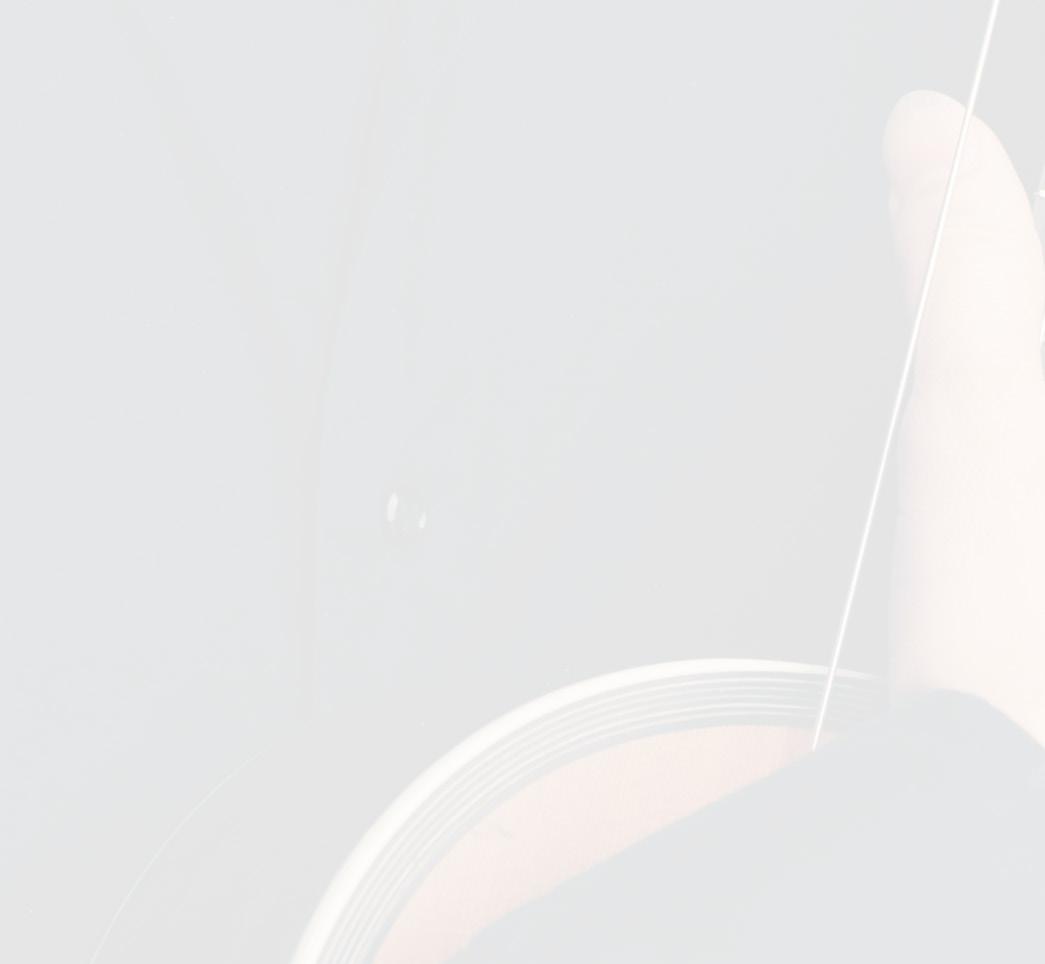
Composto a Vienna, l’Andante con variazioni in F, Hob. XVII / 6, detto anche Sonata “Un piccolo divertimento”, risale al 1793, proprio nel periodo compreso tra i due viaggi in Inghilterra. L’ innocuo titolo potrebbe far pensare che si tratti di un’opera relativamente leggera; al contrario, si tratta di un lavoro di grande profondità e virtuosismo, scritto, in parte, in seguito alla morte improvvisa, il 23 gennaio, di una sua amica viennese, la musicista dilettante Maria Anna (o Marianne) von Genzinger, di soli 42 anni. Haydn aveva scritto la sua Sonata per pianoforte in Mi bemolle (Hob. XVI / 49) per Marianne nel 1789-90. Come lei stessa aveva dichiarato, il brano le piaceva “davvero molto”. L’Andante con variazioni fu ispirato anche da una talentuosa pianista vivente, Barbara (“Babette”) von Ployer, per la quale Mozart aveva composto i Concerti per pianoforte K. 449 e K. 453.
Haydn è giustamente ritenuto un genio della forma. È stato il pioniere della “forma sonata monotematica”, in cui utilizza un tema principale invece di due. In questo caso, troviamo un esempio di un’altra delle sue principali tecniche strutturali: le doppie variazioni. Haydn se ne serve con un effetto altrettanto ipnotico nel movimento lento della Sinfonia “Rullo di timpani”, n. 103 (1795). Nell’opera da camera i due temi sono in Fa minore e Fa maggiore: ciascuno è articolato e poi variato due volte prima della coda. C’è un tema nobile in Fa minore con ritmo punteggiato e un’elegante melodia in Fa maggiore più animata. Inizialmente Haydn terminò l’opera con la seconda variazione in Fa maggiore e una breve coda, ma poi la modificò, andando ad aggiungere una coda prolungata dal triste cromatismo e trasformando il motivo punteggiato in un inquietante rintocco funebre, che svanisce mestamente fino a una desolata conclusione: quasi certamente, un omaggio all’amica defunta.

 Joanna Wyld
Joanna Wyld
Testo di Joanna W yld (Trad. Adriana Giugno) / O dradek Records, LLC è distribuito con licenza Creative Commons Attribution-NoDerivatives 4.0 International. Autorizzazioni oltre lo scopo di questa licenza potrebbero essere disponibili su www.odradek-records.com.



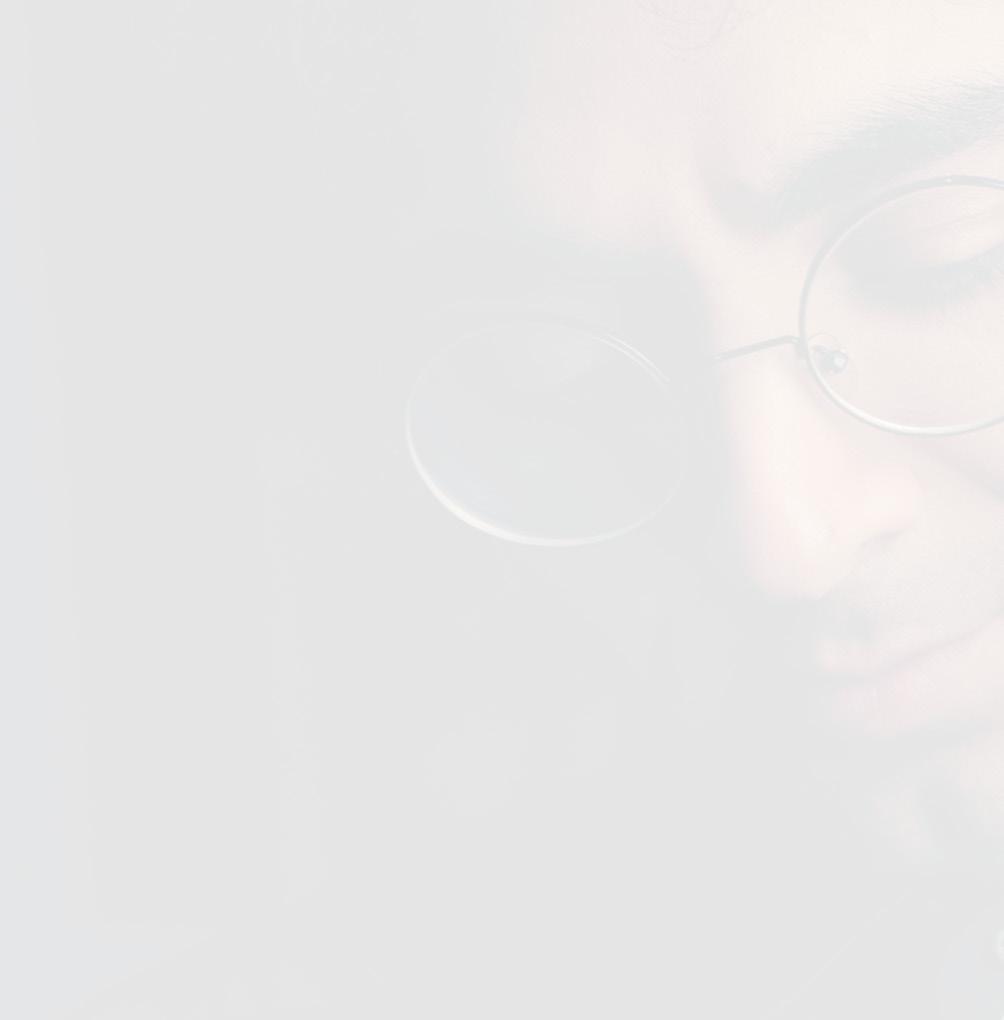
Babak Babaie è nato nel 1987 a Teheran, in Iran. Ha intrapreso gli studi di chitarra con Alireza Tafaghodi e Mehrdad Pakbaz. La sua carriera come professionista della chitarra classica è iniziata dopo aver vinto il Primo Premio al primo Concorso per solisti di Teheran nel 2008. Dopo essersi trasferito in Austria nel 2011, si è laureato in Guitar Performance presso la Kunstuniversität di Graz con Paolo Pegoraro e ha proseguito gli studi in Svizzera sotto la supervisione del noto chitarrista Paul Galbraith presso la Musikakademie di Basilea e successivamente si è laureato in Pedagogia musicale con Andreas von Wangenheim presso la Musikhochschule di Lucerna. Ha partecipato a numerose masterclass e si è esibito in Iran, Europa e Canada come solista e in formazioni cameristiche, non solo con questo progetto in duo, ma anche con A musical theater for children e Lachrimae: Songs and Fantasies by John Dowland, con il soprano Lena Tschinderle. Vive a Basilea dal 2016 ed è professore di chitarra presso la Freie Musikschule di Basilea e la Musikschule di Lucerna.


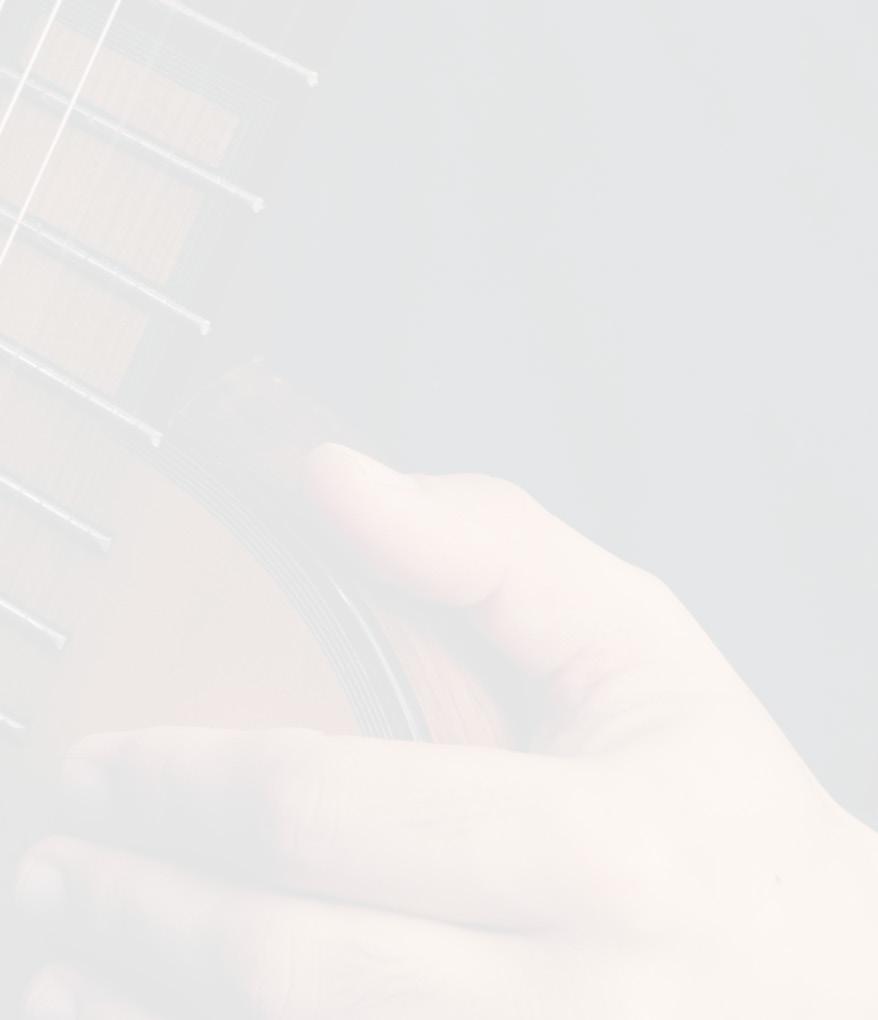



è nato nel 1984 in Italia. Deve la propria formazione musicale a Fernando Di Modugno e a Stefano Grondona, laureandosi a Bari e Vicenza. Successivamente ha studiato con Paolo Pegoraro a Graz e con Paul Galbraith a Basilea. Di particolare rilevanza è stata per lui l’esperienza, durata circa dieci anni, dei corsi estivi tenuti da Oscar Ghiglia presso l’Accademia Musicale Chigiana di Siena, prima come uditore e poi come borsista. Ha tenuto concerti come solista e in formazioni cameristiche, soprattutto in diversi duo di chitarre. Tra gli altri, ama citare Cristina Lyssimachou, Vahur Kubja, Petra Polackova e Babak Babaie, i cui contributi considera fondamentali nel proprio percorso. Gran parte del suo repertorio consiste da sempre in proprie trascrizioni per chitarra di brani scritti originariamente per altri strumenti. Dal 2011 al 2016 Vincenzo ha insegnato Chitarra presso il Conservatorio Santa Cecilia di Roma. Attualmente è titolare di cattedra di Chitarra presso il Conservatorio Nino Rota di Monopoli.

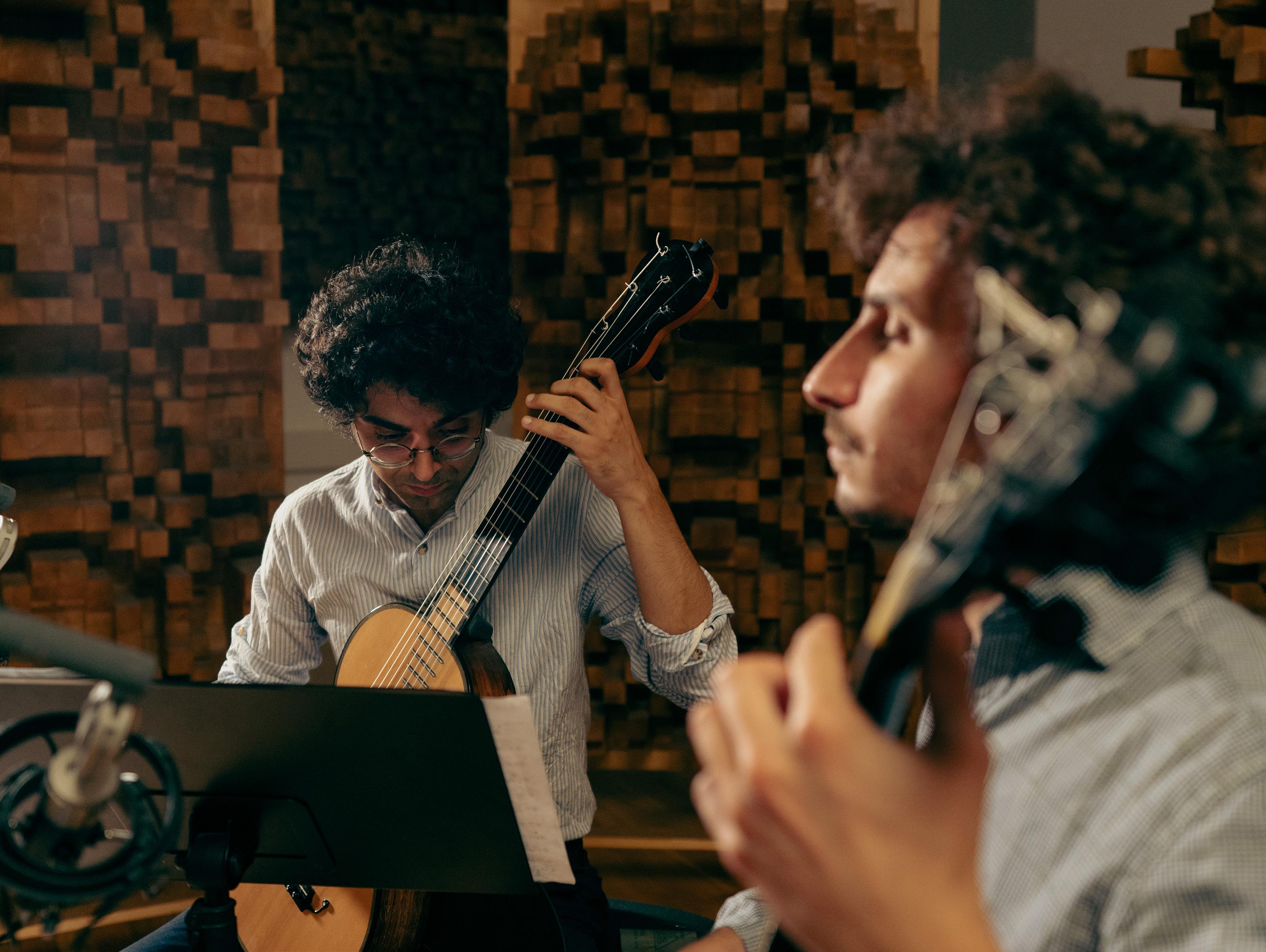

Wir lernten uns 2010 an der Universität für Musik und darstellende Kunst in Graz (Österreich) kennen.
Unsere Zusammenarbeit entstand aus unserer gemeinsamen Faszination für die Aufführung von klassischem Repertoire auf historischen Instrumenten.
So kommt es, dass wir neben dem ursprünglich für Gitarre geschriebenen Repertoire auch eigene Transkriptionen von Streichquartetten, Orchesterwerken und Klaviersonaten von Haydn, Mozart und Schubert kreieren, die noch nie zuvor auf der Gitarre aufgeführt wurden. In Anlehnung an die historischen Quellen und Originaltranskriptionen der Gitarristen Giuliani, Carulli und De Fossa versuchen wir, den Klang anderer Instrumente auf der Gitarre wachzurufen, anstatt ihn wiederzugeben. Letztlich ist dies das ehrgeizigste Ziel einer historischen Aufführung: zu versuchen, auf die musikalischen Ideen des Komponisten zurückzugehen, anstatt sich auf die instrumentalen Klischees ihrer Zeit zu fokussieren, um so den Stil lebendig und damit originell zu machen.
Wir spielen beide siebensaitige romantische Gitarren; Babak spielt eine Grobert-Kopie aus dem Jahr 2004 von Denis Fuchs. Vincenzo spielt eine originale französische Gitarre, die um 1830 in Mirecourt gebaut wurde.
Der lateinische Begriff Altus bedeutet einerseits hoch und gleichzeitig tief, ein Wort für beides.




Hans Keller schrieb: „Der große Komponist komponiert nicht nur in bestimmten Formen und Stilen, sondern auch gegen sie. Der Stil ist der Hintergrund, Ideen hingegen sind der Vordergrund. Der Hintergrund ist das, was der Komponist erwarten lässt; der Vordergrund ist das, was er stattdessen tut.” Was die Spannungen zwischen Vorder- und Hintergrund nachweislich sinnvoll macht, ist die Kombination von maximalem Kontrast und maximaler Einheit zwischen ihnen: je größer die Spannung ist, desto mehr wird die Komposition zum Meisterwerk. Dies trifft auf das Programm unseres Projektes zu. In den drei Werken wird unsere Erwartungshaltung erfüllt und zugleich missachtet: Die innovative Doppelvariation bei Haydn, wurde sowohl in als auch entgegen Marschrhythmen geschrieben. Schuberts extrem thematische Kontraste entwickeln sich in einem kontinuierlichen Fluss. Schließlich ist Mozarts Sonate gleichzeitig kontrapunktisch als auch im galanten Stil gehalten. Extrem latente Einheit gegen extrem manifeste Vielfalt ist das Kennzeichen des Genies. Das ist wahrlich gute Musik.
Die Idee, die Partitur von Soloklavierstücken in zwei Teile zu unterteilen, entspringt unserer Überzeugung, dass es möglich ist, das Solorepertoire auch von einer kammermusikalischen Perspektive her zu spielen.
Beide Hände des Pianisten oder, allgemeiner gesagt, alle einzelnen Komponenten des musikalischen Diskurses stehen sich dabei gegenüber, treten miteinander in einen Dialog und interagieren kontinuierlich miteinander. Als wir diese Arrangements im Konzert spielten, wurde uns klar, dass wir nicht so sehr daran interessiert waren, mit Blick auf das Publikum und so synchron wie möglich die jeweils eigene Hälfte einer gemeinsamen Stimme zu projizieren, so faszinierend das auch sein mag. Vielmehr erschien es uns interessanter, uns gegenseitig anzusprechen und den Zuhörer in die Dynamik dieses kontinuierlichen Austauschs einzubeziehen. Die hier vorgeschlagenen Stücke eignen sich für unsere Herangehensweise mehr denn je zuvor. Dies ist einer der Gründe, warum sie ausgewählt wurden, nicht nur wegen der offensichtlichen Tatsache, dass sie echte Meisterwerke ihrer Zeit sind. Darum haben wir Jahre damit verbracht, sie zu zerlegen und in unseren Arrangements wieder und wieder neu zusammenzusetzen, und warum sie uns jedes Mal, wenn wir an ihnen arbeiten, neue Anregungen bieten.


Babak Babaie und Vincenzo Giura


In einer Welt der Instagram-Filter sind wir es gewohnt, verschiedene Interpretationen desselben Materials kennenzulernen, mit Farben und Proportionen zu spielen, bis sich eine neue Gestalt durchgesetzt hat. Doch während dieser Prozess unmittelbar ist und sich auf einige wenige bereits vorhandene Alternativen beschränkt, ist die Umarbeitung von Musik in verschiedene Erscheinungsformen ein subtilerer Prozess, der sich über Jahrhunderte entwickelt hat. Arrangements und Transkriptionen, die oft in mühevoller Kleinarbeit und mit fachkundigem Geschick erstellt werden, bieten erfrischend neue Möglichkeiten, ein Originalwerk zu interpretieren. Im vorliegenden Album haben die beiden Gitarristen ihre eigenen historisch begründeten Transkriptionen von etabliertem Klavierrepertoire von Mozart, Schubert und Haydn angefertigt, die ein neues Licht auf das Vertraute werfen.
W.A. Mozart vollendete seine Klaviersonate Nr. 15 F-Dur, KV 533 am 3. Januar 1788; sie wurde später im selben Jahr von Hoffmeister veröffentlicht. Der letzte Satz, das Rondo, wurde 1786 separat als eigenständiges Stück geschrieben und später als Rondo in F-Dur, KV 494, katalogisiert. Mozart fügte die ersten beiden Sätze 1788 hinzu, erweiterte so das Rondo aus Gründen der Ausgewogenheit und erweckte dabei den Eindruck, dass er die drei Sätze als ein vollständiges Werk konzipiert hatte.
Doch zwischen der Komposition des Rondos und der ersten beiden Sätze der Sonate lag ein einschneidendes Ereignis in Mozarts Leben: der Tod seines Vaters Leopold am 28. Mai 1787 c in vielerlei Hinsicht das platonische Ideal des „Tiger-Elternteils” –, mit dem Mozart zeitlebens häufig korrespondiert hatte. Mozart schrieb an Baron Gottfried von Jacquin: „Ich benachrichtige sie daß ich heute als ich nach haus kamm die traurige Nachricht von dem Tode meines besten Vaters bekam. Sie können sich meine Lage vorstellen!” Dieser Verlust führte zu einer Periode des relativen Stillstands in Mozarts Schaffen, was zum Teil seine Entscheidung erklären mag, das frühere Rondo in dieser Sonate wiederzuverwenden.


Mozart war im November 1783 nach Wien zurückgekehrt und besserte sein Einkommen auf, indem er Schüler annahm, darunter auch Hummel, der zwischen 1786 und 1788 zur Zeit der Komposition dieser Musik bei ihm wohnte und der selbst ein versierter Komponist von Klavierwerken werden sollte. Mozart war aus finanziellen Gründen auf Schüler angewiesen, musste aber feststellen, dass diese Einnahmequelle nicht zuverlässig war, denn er schrieb 1782: „Dann mache ich es nicht mehr mit zwölf Lektionen, sondern


monatlich. Ich habe mit Schaden erfahren, daß sie oft ganze Wochen ausgesetzt; nun aber, mögen sie lernen oder nicht, so muß mir jede sechs Dukaten geben”. Dennoch war Mozarts Einkommen dürftig, und im Sommer 1788 begann er, Briefe an seine Freunde zu schreiben, in denen er sie um Darlehen bat oder um Geduld, wenn er diese noch nicht zurückzahlen konnte.
Der Stil der Sonate in F-Dur verkörpert die für Mozart so charakteristische Kombination aus Leichtigkeit und Tiefgründigkeit. Leopold hatte ein Jahrzehnt zuvor, am 13. August 1778, an Wolfgang geschrieben: „Wenn du nun itzt deine Scolarn nicht hast, so schreibe abermahl etwas... Nur Kurz – leicht – popular... Glaubst du dich vielleicht durch solche Sache herunterzusetzen? Keineswegs! Hat denn [J.C.] Bach in London jemals etwas anders, als derleÿ Kleinigkeiten herausgegeben? Das Kleine ist Groß, wen es natürlich, flüssend und leicht geschrieben und gründlich gesetzt ist. Der gute Satz und die Ordnung unterscheidet den Meister vom Stümper auch in Kleinigkeiten.
Doch Mozart – und Haydn – unterschieden sich vom leichten galanten Stil J.C. Bachs („der Londoner Bach”), indem sie die Techniken seines Vaters J.S. Bach übernahmen und kontrapunktische Elemente in einen geräumigen, ausgewogenen Rahmen einbauten. Die Sonate in F-Dur ist ein schönes Beispiel dieser Kombination von Einflüssen. Sie beginnt mit einem Motiv, das eines J.S. Bach würdig ist, entfaltet sich aber in einem Geist der guten Laune weiter. Das vorliegende Arrangement ist nicht die einzige Fassung der originalen Sonate für zwei Instrumente; Grieg machte eine Bearbeitung des Werkes für zwei Klaviere, indem er einem begleitenden zweiten Teil neue Harmonie-Ebenen hinzufügte.


Das zentrale Andante in B-Dur ist bemerkenswert für seine Zartheit, aber ebenso für eine gewisse Rauheit und einen großzügigen Einsatz des Klaviers, die zuweilen an Beethoven erinnern. Gewöhnt an die starken Emotionen, wie sie im 19. Jahrhundert üblich waren, ist es immer wieder lohnend, Mozarts langsamen Sätzen aufmerksam zuzuhören, besonders jenen, die nach dem Tod seines Vaters geschrieben wurden; eine zarte, kindliche Einfachheit und offenkundige Unschuld bieten oft die heitere Oberfläche, unter der es echte Gefühlstiefen, einschließlich Trauer, auszuloten gilt. Hier wird diese Zerbrechlichkeit im Andante durch Momente offener Emotionen versetzt, die während der fast knorrigen und leidenschaftlichen MollPassagen den romantischen Stil vorwegnehmen. Man stellt sich hier wieder einmal die Frage, was Mozart


noch hätte erreichen können, wenn er länger gelebt hätte. Das abschließende Rondo basiert auf einem bezaubernden, zarten Thema, das sich in verschiedenen Gestalten mit entweder deklamatorischen oder introspektiven Episoden abwechselt, bis es schließlich verpufft und in einem Schluss von bemerkenswerter Subtilität ausklingt.
Franz Schuberts erste beiden Klaviersonaten wurden im Frühjahr 1826 in Wien veröffentlicht. Nach diesem Erfolg wandte sich der Komponist an zwei Leipziger Verleger, Heinrich Albert Probst und Breitkopf & Härtel, und bot ihnen eine Auswahl seiner Kammermusikwerke an. Ihre Antwort war wenig enthusiastisch, und beide schlugen ihm vor, ihnen einige leichtere, kürzere Stücke zu schicken. Wahrscheinlich hat diese Bitte Schubert dazu veranlasst, in den folgenden Jahren eine Reihe kürzerer Klavierstücke zu schreiben, darunter mehrere Moments musicaux und, 1828, die Drei Klavierstücke, D. 946.
Die Urschrift der Partitur von D. 946 ist unausgefeilter als viele von Schuberts endgültigen Manuskripten; es fehlt der letzte Schliff, wie er oft bei anderen Werken, die er für die Veröffentlichung vorbereitet hatte, zu sehen ist. In der Tat ist es nicht ganz sicher, dass diese Stücke dazu gedacht waren, zu einem Satz zusammengefügt zu werden. Es war Brahms, der die Werke vor ihrer ersten, posthumen Veröffentlichung im Jahr 1868 redigierte und ihnen den einfachen Titel Drei Klavierstücke zuwies. Brahms hätte die Stücke angesichts ihres spontanen Charakters auch als „Impromptus” bezeichnen können. Das beschwingte zweite Stück in Es-Dur hat den schaukelnden Charakter einer Barkarole, im Kontrast zu zwei dramatischen


Moll-Episoden, von denen die zweite durch einen Taktwechsel gekennzeichnet ist. Was an den Drei Klavierstücken besonders auffällt, ist die Art und Weise, in der Schubert eine Brücke zwischen der Gravität und Ausgewogenheit der Klassik einerseits und den stürmischen Experimenten der Romantik andererseits bildet. Es ist schwer zu verstehen, wie wenig Anklang diese Stücke fanden, als sie komponiert wurden.
Joseph Haydn verbrachte einen Großteil seiner Karriere abseits des kulturellen Zentrums Wiens im ungarischen Schloss von Esterházy, wo er von 1761 bis 1790 auf einem sicheren aber abgelegenen Posten das Musikleben des Schlosses unter seiner Obhut hatte. Danach reiste er nach England. Ab 1795 konnte Haydn seine höfischen Pflichten auf Teilzeitbasis weiterführen, was ihm ermöglichte, mehr Zeit in Wien zu verbringen. Haydn hielt sich von 1791-1792 und von 1794-1795 in England auf.


In Wien komponiert, stammt das Andante mit Variationen F-Moll, Hob. XVII/6, auch bekannt als die Sonate „Un piccolo divertimento”, aus dem Jahr 1793, also aus der Zeit zwischen diesen Englandreisen. Der unverfängliche Titel lässt vermuten, dass es sich um ein relativ leichtes Werk handelt, es ist jedoch virtuos und tief empfunden, zum Teil wohl als Reaktion auf den plötzlichen Tod seiner Freundin, der Wiener Amateurmusikerin Maria Anna (oder Marianne) von Genzinger, am 23. Januar. Sie war erst 42 Jahre alt. Haydn hatte seine Klaviersonate in Es (Hob. XVI/49) 1789-90 für Marianne geschrieben, ein Stück, von dem die Widmungsträgerin erklärt hatte, dass es ihr „wirklich sehr gut gefiel”. Das Andante mit Variationen wurde auch von einer begabten Pianistin, Barbara („Babette”) von Ployer, inspiriert, für die Mozart seine Klavierkonzerte KV 449 und KV 453 komponiert hatte.
Haydns Einfallsreichtum in Bezug auf die Form ist etwas, für das er zu Recht gefeiert wird; er war der Pionier der „monothematischen Sonatenform”, bei der anstelle von zwei Hauptthemen nur eines verwendet wird, und wo er dann eine weitere seiner für ihn charakteristischen beeindruckenden strukturellen
Techniken entfaltet: eine Reihe von Doppelvariationen. Haydn verwendete diesen Kunstgriff mit ähnlich faszinierender Wirkung im langsamen Satz seiner Sinfonie Nr. 103 „mit dem Paukenwirbel” (1795). In dem Kammermusikwerk stehen die beiden Themen in F-Moll und F-Dur: jedes wird artikuliert und dann vor der Coda zweimal variiert. Es entsteht ein nobles, punktiertes F-Moll-Thema und eine elegante, lebhaftere F-Dur-Melodie. Haydn beendete das Werk ursprünglich mit der zweiten Variation in F-Dur und einer kurzen Coda, revidierte es dann aber, um eine ausgedehnte Coda mit schwermütiger Chromatik einzufügen, die das punktierte Motiv in ein eindringliches, trauerndes Läuten verwandelt, das ohne Tröstung in einem traurigen Ende verklingt: mit großer Wahrscheinlichkeit ein Tribut an seine verstorbene Freundin.

 Joanna Wyld
Joanna Wyld
Autor des Textes Joanna Wyld (Übers. Antonio Gómez Schneekloth) / Odradek Records, LLC ist im Besitz einer Creative Commons-Namensnennung-Keine Bearbeitungen-4.0 Internationalen Lizenz. Genehmigungen, die über den Geltungsrahmen dieser Lizenz hinausgehen, kann man bei www.odradek-records.com erhalten.




Babak Babaie wurde 1987 in Teheran (Iran) geboren. Er erhielt Unterricht bei Alireza Tafaghodi und Mehrdad Pakbaz und begann seine professionelle Karriere, nachdem er 2008 den ersten Preis bei dem Wettbewerb „First Soloist Competition of Tehran“ gewonnen hatte. Er studierte an der Kunstuniversität Graz in der Klasse von Paolo Pegoraro und an der Musikakademie Basel bei Paul Galbraith. Das Studium für Musikpädagogik absolvierte er an der Musikhochschule Luzern bei Andreas von Wangenheim. Er nahm an mehreren Meisterkursen u.a. als Stipendiat an der Accademia Musicale Chigiana in Siena in der Klasse von Oscar Ghiglia teil. Babak Babaie konzertiert im Iran, in Europa und Kanada, sowohl als Solist, als auch in kammermusikalischen Besetzungen. Zu seinen Programmen gehören unter anderem „A musical theatre for children“ und „Lachrimae: Songs and Fantasies by John Dowland“ mit der Sopranistin Lena Tschinderle. Seit 2016 lebt Babak in Basel und arbeitet als freischaffender Musiker und als Gitarrenlehrer an der Freien Musikschule in Basel und an der Musikschule Luzern.






Vincenzo Giura wurde 1984 in Italien geboren. Seine musikalische Ausbildung verdankt er Fernando Di Modugno und Stefano Grondona. Seinen Abschluss machte er in Bari und Vicenza. Später studierte er bei Paolo Pegoraro in Graz und bei Paul Galbraith in Basel. Von besonderer Bedeutung war für ihn die Erfahrung, zunächst als Zuhörer und später als Stipendiat, etwa ein Jahrzehnt lang an den Sommerkursen von Oscar Ghiglia an der Accademia Musicale Chigiana von Siena teilgenommen zu haben. Er konzertiert als Solist und in Kammermusikensembles und wirkt in verschiedenen Gitarren-Duo-Formationen mit. Er kooperierte u. a. mit Cristina Lyssimachou, Vahur Kubja, Petra Polackova und Babak Babaie. Ein großer Teil seines Repertoires besteht seit jeher aus eigenen Transkriptionen für Gitarre von Werken, die ursprünglich für andere Instrumente geschrieben wurden. Von 2011 bis 2016 war Vincenzo Dozent für Gitarre am Conservatorio Santa Cecilia in Rom. Zur Zeit ist er Professor für Gitarre am Conservatorio Nino Rota in Monopoli.

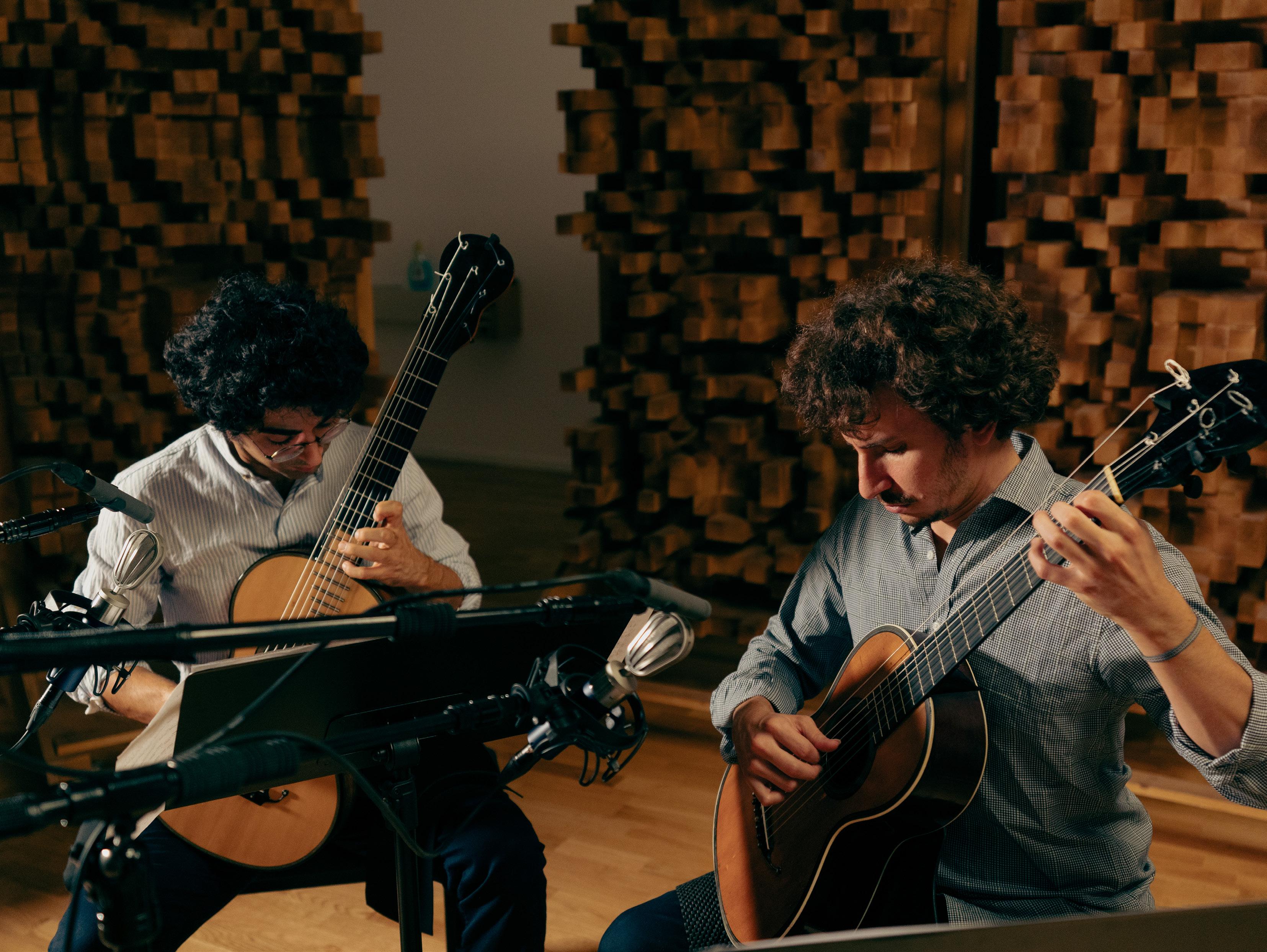




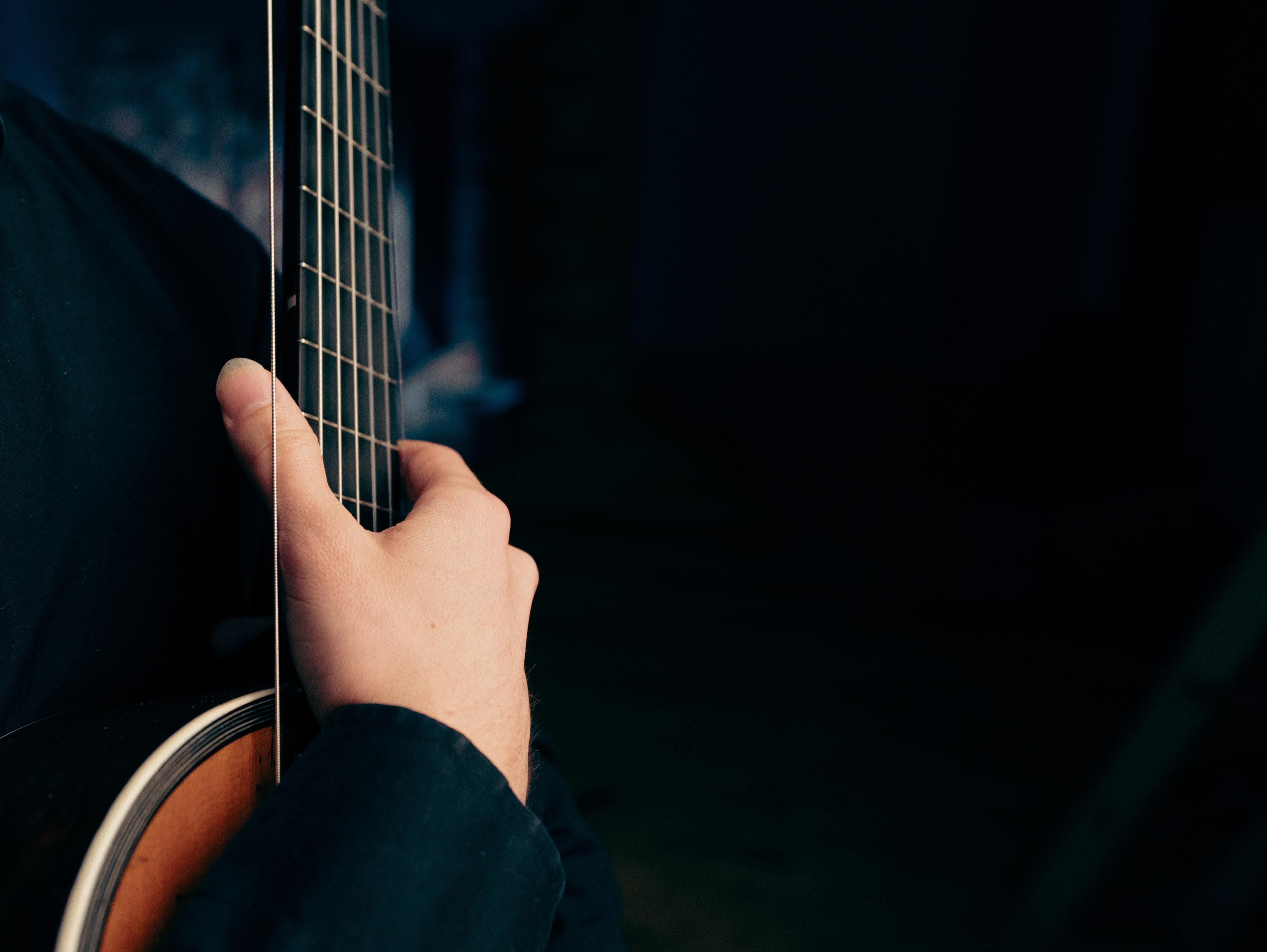


www.odradek-records.com